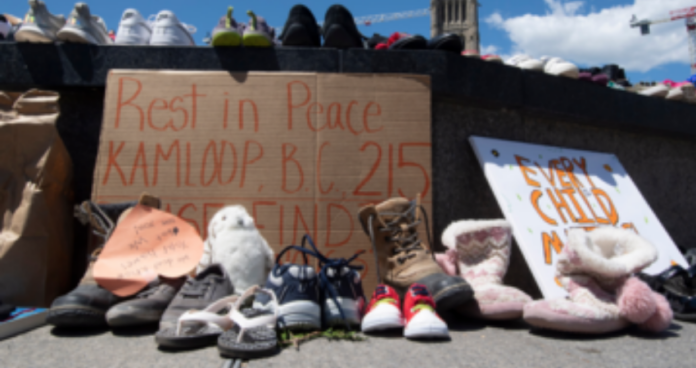A mass grave has been found in British Columbia, Canada, that contained the remains of about 215 children, at one of the old Indigenous residential schools. These schools were built to assimilate indigenous people according to Canadian society.
The First Nations, museum specialists, and the coroners are working to find out the causes and timings of the children’s deaths, which are still unknown. According to the reports, the initial findings revealed that the school administrators never documented those deaths.
How Indigenous Residential Schools Operated in Canada?
Canada’s indigenous residential schools were like boarding schools run by the government and religious authorities, where they forcefully assimilated young children. It was mandatory during the 19th and 20th centuries for the natives to study there. Kamloops was the largest player in this assimilation system. It was opened during the Roman Catholic administration in 1890. The government took over the school in 1969 and operated it as a residence for more than 150,000 indigenous students. According to reports, approximately 6000 children have died These children were taken from these families and placed in these schools. Only 4,100 of them have been identified.
The children were not allowed to speak their native language. Administration abused them and mistreated them whenever they practiced their own culture. In 2008, the Truth and Reconciliation Commission (TRC) of Canada became active and started to document the impacts of this system in The Missing Children Project. It reported that large numbers of indigenous children never went back to their homes after joining those schools. TRC equated the school system to ‘Cultural Genocide’. The Canadian government provided an official apology after revelations made by TRC.
What Happened to Children?
According to the reports, the remains of the dead children were found with the help of a GPR (ground-penetrating radar) during the school’s survey. Shockingly, the ages of missing children were as few as 3 years old. The First Nations tribes reportedly visited the communities, where those children came from. The coroner said that they were still very early in the process of information collection.
The First Nations said that it was something widely stressed by the survivors for years and years but the majority of the country did not believe them. Now after seeing all the dead bodies of these kids, nobody could deny what the survivors of invasion, colonization, and assimilation were saying.
TRC also reported that schools kept students malnourished due to diseases like influenza and typhoid were common among children. The commission couldn’t locate the records of death but noted that children in Indigenous schools died at wat higher rate than other Canadian children. Many of them died due to infectious diseases, suicide, fire, drowning, and other accidental causes.
When Did the Schools Close?
The last one of all the Indigenous residential schools was closed in 1996, which was not that long ago. It also means that there are still many survivors present with fresh post-traumatic effects.
The Candian government called upon the pope to formally apologize for Roman Catholic Church’s role in Canada’s largest residential school system, Kamloops. Reportedly, the Church operated it between 1890 and 1969 while catholic missionary congregations ran 98 such schools. After that, the government took over till it closed for good in 1978.
The government of 2008 led by Prime Minister Stephen Harper apologized for what happened to children in an official statement. He acknowledged that indigenous students went through the physical and sexual abuse in residential schools. Moving towards the reconcliation and healing process, PM Harper promised a new begining after a sad legacy of his country. Reportedyl, TRC also presented new opportunities for Canadians to educate themselves about the history of indigenous people and form new relationships with them to make them more inclusive in thier society.


